Cooperative Metabolic Adaptations in the Host Can Favor Asymptomatic Infection and Select for Attenuated Virulence in an Enteric Pathogen
- PMID: 30100182
- PMCID: PMC6447043
- DOI: 10.1016/j.cell.2018.07.016
Cooperative Metabolic Adaptations in the Host Can Favor Asymptomatic Infection and Select for Attenuated Virulence in an Enteric Pathogen
Abstract
Pathogen virulence exists on a continuum. The strategies that drive symptomatic or asymptomatic infections remain largely unknown. We took advantage of the concept of lethal dose 50 (LD50) to ask which component of individual non-genetic variation between hosts defines whether they survive or succumb to infection. Using the enteric pathogen Citrobacter, we found no difference in pathogen burdens between healthy and symptomatic populations. Iron metabolism-related genes were induced in asymptomatic hosts compared to symptomatic or naive mice. Dietary iron conferred complete protection without influencing pathogen burdens, even at 1000× the lethal dose of Citrobacter. Dietary iron induced insulin resistance, increasing glucose levels in the intestine that were necessary and sufficient to suppress pathogen virulence. A short course of dietary iron drove the selection of attenuated Citrobacter strains that can transmit and asymptomatically colonize naive hosts, demonstrating that environmental factors and cooperative metabolic strategies can drive conversion of pathogens toward commensalism.
Keywords: Citrobacter rodentium; antivirulence; asymptomatic persistent infections; commensalism; cooperative defenses; dietary iron; host-pathogen interactions; insulin resistance.
Copyright © 2018 Elsevier Inc. All rights reserved.
Conflict of interest statement
Figures

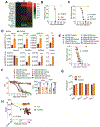
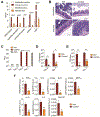

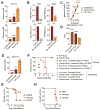
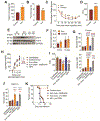
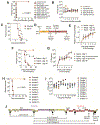
Comment in
-
Sugar Turns Bacteria Sweet: A Peace Offering in the Gut.Cell. 2018 Sep 20;175(1):36-37. doi: 10.1016/j.cell.2018.08.053. Cell. 2018. PMID: 30241612
-
Evolving in a Microbial Soup: You Are What They Eat.Dev Cell. 2018 Dec 17;47(6):682-683. doi: 10.1016/j.devcel.2018.11.045. Dev Cell. 2018. PMID: 30562507
References
-
- Agoro R, Benmerzoug S, Rose S, Bouyer M, Gozzelino R, Garcia I, Ryffel B, Quesniaux VFJ, and Mura C (2017). An Iron-Rich Diet Decreases the Mycobacterial Burden and Correlates With Hepcidin Upregulation, Lower Levels of Proinflammatory Mediators, and Increased T-Cell Recruitment in a Model of Mycobacterium bovis Bacille Calmette-Guerin Infection. J Infect Dis 216, 907–918. - PubMed
-
- Andrews (2010). FastQC: a quality control tool for high throughput sequence data. Available online at:http://www.bioinformatics.babraham.ac.uk/proiects/fastqc.
Publication types
MeSH terms
Substances
Grants and funding
LinkOut - more resources
Full Text Sources
Other Literature Sources
Medical
Molecular Biology Databases

